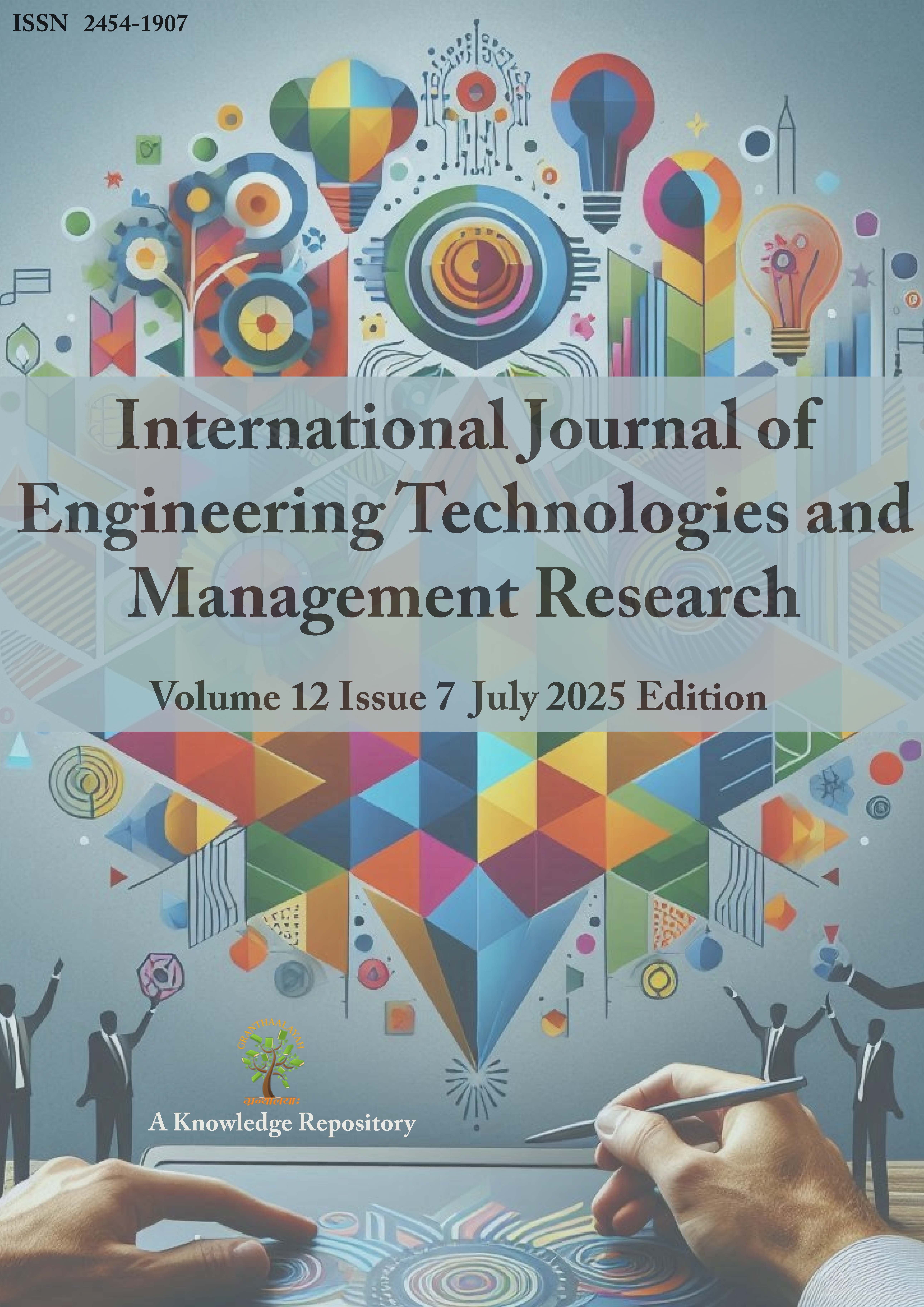EVOLUTION IN THE GEOGRAPHICAL STRUCTURE OF THE TRANSNATIONAL CORPORATIONS THROUGH GLOBAL PRODUCTION NETWORKS IN THE CASE OF THE AUTOMOTIVE INDUSTRY OF IRAN
DOI:
https://doi.org/10.29121/ijetmr.v12.i7.2025.1558Keywords:
Automotive Industry, Geopolitical Obstacles, Less-Developed Country, Gpns, IranAbstract
Iran's automotive industry, a key economic driver contributing significantly to GDP and employment, has been consistently challenged by geopolitical factors, particularly economic and political sanctions. Despite being one of the top 20 vehicle manufacturers globally, the industry has faced severe impacts from Western sanctions. Nevertheless, Iran has maintained its production levels by strategically shifting its trade policies. Initially, the industry pivoted away from Western partnerships, strengthening ties with China, its primary East Asian trade ally. As sanctions intensified, Iran further diversified its trade network, focusing on Persian Gulf neighbors, Central Eastern Europe, and other sanctioned countries like Russia and Venezuela. These partnerships have been crucial in sustaining vehicle production through completely knocked-down and semi-knocked down imports. Domestically, the industry has faced growing criticism over the low quality and high prices of locally produced vehicles, prompting a potential shift in policy. The government is now considering lifting bans on foreign and second-hand car imports, indicating a move away from strict autarky towards a more open market. This evolution in trade policy and international cooperation underscores the adaptability of Iran's automotive sector and its efforts to maintain its global standing despite persistent geopolitical challenges.
Downloads
References
Abedini, J., & Péridy, N. (2009). The Emergence of Iran in the World Car Industry: An Estimation of Its Export Potential. The World Economy, 32(5), 790–818. https://doi.org/10.1111/j.1467-9701.2008.01153.x
Al-Monitor. (2018). US Sanctions Put Nearly Half a Million Jobs At Risk in Iran's Auto Parts Industry.
Al-Monitor. (2022). Iranian Carmaker Saipa Prepares first Export to Venezuela.
Amuzegar, J. (1993). Iran's Economy Under the Islamic Republic. Tauris.
Amuzegar, J. (2014). The Islamic Republic of Iran: Reflections on An Emerging Economy. Routledge. https://doi.org/10.4324/9781315754871
Anadolu Agency. (2022). Iran Bans Import of French Automobiles Amid Growing Tensions.
Atlantic Council. (2018). A Brief History of Sanctions on Iran.
Automotive Logistics. (2022). Iran Sets Sights on Russia's Automotive Market.
Automotive World News. (2016). PSA Group and SAIPA finalize their agreement joint-venture for Citroën in Iran.
Barazandeh, B., Rafieisakhaei, M. H., Moosavi, A., & Bastani, K. (2016). Effect of Localization on the Car Market Under Intense Sanctions. 34th International Conference of the System Dynamics Society, Delft, Netherlands.
Batmanghelidj, E. (2020). Resistance is Simple, Resilience is Complex: Sanctions and the Composition of Iranian Trade. The SAIS Initiative for Research on Contemporary Iran, Johns Hopkins University.
Batmanghelidj, E. (2022). Reassessing Sanctions as a Driver of China-Iran Trade. In M. Haghirian & L. Zaccara (Eds.), Iran's 'Eastward Turn' in a turning world (Chapter 4). Routledge. https://doi.org/10.4324/9781003269175
Bazoobandi, S. (2015a). On Target? EU Sanctions as Security Policy Tools. In I. Dreyer & J. Luengo-Cabrera (Eds.), EU Institute for Security Studies. Paris.
Bazoobandi, S. (2015b). Sanctions and Isolation: the Driving Force of Sino-Iranian Relations. East Asia, 32, 257–271. https://doi.org/10.1007/s12140-015-9244-4
Billingsley, A. (2018). Iran's Troubled Auto Industry. The Iran Primer, United States Institute of Peace.
Dialogo-Americas. (2022). Venezuela and Iran deepen relations on various fronts.
Dicken, P. (2015). Global Shift: Mapping the Changing Contours of the World Economy. Guilford Press.
Dizaji, S. (2018). Economic Diplomacy in Iran: Reorientation of Trade to Reduce Vulnerability. In Handbook of Trade Policy for Development (pp. 273–296). Edward Elgar. https://doi.org/10.4337/9781784710842.00024
Dudley, D. (2018). How US Sanctions Could Cause Turmoil for the Iranian Auto Market. Forbes.
Dunning, J. H., & Lundan, S. M. (2008). Multinational Enterprises and the Global Economy. Edward Elgar Publishing.
Ellis, E. (2006). Made in Iran. Fortune Magazine.
Federal Register. (2018). Reimposing Certain Sanctions with Respect to Iran. Executive Order 13846.
Fransman, M. (1986). Technology and Economic Development. Wheatsheaf Books. https://doi.org/10.1007/978-1-349-18440-8
Guardian. (2016). Peugeot-Citroen Back on the Road in Iran with Deal to Build Cars.
Hamshahrionline. (2006). Death of four Passengers of the Peugeot 405 Due to Fire and Technical Defects. (in Persian)
Humphrey, J., & Memedovic, O. (2003). The Global Automotive Industry Value Chain: What Prospects for Upgrading by Developing Countries? UNIDO. https://doi.org/10.2139/ssrn.424560
Humphrey, J., & Oeter, A. (2000). Motor Industry Policies in Emerging Markets: Globalisation and the Promotion of Domestic Industry. In J. Humphrey, Y. Lecler, & M. S. Salerno (Eds.), Global strategies and local realities: The auto industry in emerging markets (pp. 42–71). Palgrave Macmillan. https://doi.org/10.1057/9780333977712_3
Humphrey, J., Lecler, Y., & Salerno, M. S. (2000). Global Strategies and Local Realities: The Auto Industry in Emerging Markets. Palgrave Macmillan. https://doi.org/10.1057/9780333977712
ILIA Group. (2015). Iran Automobile Industry—Past to Present.
Industrial Development and Renovation Organization of Iran (IDRO). (2021). Retrieved September 2022, from
Intellinews. (2022). Iran and Russia Save Each Other's Car Industries.
Iran Khodro Company (IKCO). (2021). An Introduction to the IKCO. (in Persian)
Iranian Parliament Research Center. (2016). Analysis of the National Automotive Industry and Solutions to Overcome Existing Challenges (in Persian).
James, L. (2021). How Sanctions Impact Iran and European Automotive Manufacturers. Journal of Politics and Strategy, 5(3), 18–22.
Jonesday. (2018). Impact of U.S. Withdrawal from the Iran Nuclear Deal.
Kalaian, S. A., Kasim, R. M., & Kasim, N. R. (2019). Descriptive and Predictive Analytical Methods for Big Data. In Big data applications in the social sciences (Chapter 18). IGI Global. https://doi.org/10.4018/978-1-5225-7501-6.ch018
Manteghi, M., & Jafari, M. (2011). Towards Globalization in the Automotive Industry. Etelaat, Tehran (in Persian).
Mather, D., Mather, Y., & Tamjidi, M. (2007). Making Cars in Iran: Working for Iran Khodro. Critique: Journal of Socialist Theory, 35(1), 9–21. https://doi.org/10.1080/03017600701238356
Mehri, D. B. (2015a). Pockets of Efficiency and the Rise of Iran Auto: Implications for Theories of the Developmental State. Studies in Comparative International Development, 50(3), 408–432. https://doi.org/10.1007/s12116-015-9180-8
Mehri, D. B. (2015b). The Role of Engineering Consultancies as Network-Centered Actors to Develop Indigenous Technical Capacity: the Case of Iran's Automotive Industry. Socio-Economic Review, 13(4), 747–769. https://doi.org/10.1093/ser/mwu041
Middle East and Political Economic Institute (MEPEI). (2021). The Current Development of Iran's Auto Industry.
Mirkina, I. (2018). FDI and Sanctions: An Empirical Analysis of Short- and Long-Run Effects. European Journal of Political Economy, 54, 198–225. https://doi.org/10.1016/j.ejpoleco.2018.05.008
Mordor Intelligence. (2019). Analysis of the Automobile Industry in Iran—Growth, Trends, COVID-19 Impact and Forecasts (2021–2026).
Movahed, M. (2020). Industrializing an Oil-Based Economy: Evidence from Iran's Auto Industry. Journal of International Development, 32, 1148–1170. https://doi.org/10.1002/jid.3499
Nag, B., Saikat, B., & Rittwik, C. (2007). An Analysis of Automobile Industry in Select Asian Countries: Comparison of Production, Trade and Market Structure in Selected Countries. Asia-Pacific Research and Training Network on Trade (ARTNeT) Working Paper Series, No. 37.
Nasre-Esfahani, M., & Rasoulinezhad, E. (2017). Iran's Trade Policy of Asianization and De-Europeanization Under Sanctions. Journal of Economic Studies, 44(4), 552–567. https://doi.org/10.1108/JES-05-2016-0101
News24. (2018). Iran's Domestic Car Market Stalls as Nuclear Deal Falters.
Noland, M. (2009). The (non) Impact of UN Sanctions on North Korea. Asia Policy, 7, 61–88. https://doi.org/10.1353/asp.2009.0047
OCIA. (2020, 2022). Car Production Statistics from 1999–2022.
OECworld. (2020). Import and Export Statistics in the Case of Iran.
Pakparvar, M. (2015). Iran Auto Industry. Institute for Political and International Studies (IPIS), Ministry of Foreign Affairs.
Pavlínek, P. (2020). Restructuring and internationalization of the European Automotive Industry. Journal of Economic Geography, 20(2), 509–541. https://doi.org/10.1093/jeg/lby070
Popova, L., & Rasoulinezhad, E. (2016). Have Sanctions Modified Iran's Trade Policy? An Evidence of Asianization and De-Europeanization Through The Gravity Model. Economies, 4(4). https://doi.org/10.3390/economies4040024
Radio Free Europe/Radio Liberty (RFERL). (2013a). Iran Looks to Car Exports to Power it Through Sanctions.
Radio Free Europe/Radio Liberty (RFERL). (2018b). French Carmaker Likely to Halt Iran Operations as Other Companies Leave.
Radio Free Europe/Radio Liberty (RFERL). (2018c). Mazda, Hyundai Leave Iranian Market, Affecting Cars and Shipping.
Razavi, M. R., & Alaedini, P. (2018). The Role of State, Domestic Firms, and MNCs in the Iranian Auto Industry: Improved Competitiveness or Policy Capture. In Industrial, trade, and employment policies in Iran (pp. 77–105). Springer. https://doi.org/10.1007/978-3-319-94012-0_4
Rezaeinejad, I. (2021). Automotive Industry and its Place in the Economy: Case Study Iran Auto Industry. Asian Journal of Economics, Finance and Management, 5(3), 23–32. https://doi.org/10.13140/RG.2.2.10019.17449
Roudsari, M. H., Tabatabaeian S. H. and Radfar R. (2018). ‘Obligations of Being a Carmaker on International Scale, a Review of Iranian Automotive Industry’ Majlis and Rahbord Quarterly, 98:148-194 (in Persian).
Saberi, B. (2017). Problems of Iran's Automotive Industry Competitiveness. Les' Friendship University of Russia, 102–110. https://doi.org/10.29141/2073-1019-2017-14-2-9
Setayesh, S., & Mackey, T. K. (2016). Addressing the Impact of Economic Sanctions on Iranian drug shortages in the Joint Comprehensive Plan of Action: Promoting Access to Medicines and Health Diplomacy. Globalization and Health. https://doi.org/10.1186/s12992-016-0168-6
Shayerah, I. (2010). Iran's Economic Conditions: U.S. Policy Issues. Congressional Research Service.
Shotts, K. W. (2016). Political Risk as a Hold-Up Problem: Implications for Integrated Strategy. In Strategy beyond markets (Vol. 34, pp. 57–85). Emerald Insight. https://doi.org/10.1108/S0742-332220160000034003
Statistics Center of Iran. (2017). Car Production Statistics. Tehran, Iran.
U.S. Department of State. (2011). Fact sheet: Comprehensive Iran Sanctions, Accountability, and Divestment Act (CISADA).
U.S. Department of the Treasury. (2014). Financial sanctions: Iran sanctions.
UNdata. (2021). Country profile: Iran. United Nations.
Wilman, M., & Bax, B. (2015). Reintegrating Iran with the West: Challenges and opportunities. In The automotive industry in Iran: A critical analysis (Vol. 31). International Business and Management. https://doi.org/10.1108/S1876-066X20150000031009
Zawya News. (2016). IKCO and Peugeot to Establish a Joint Venture in Iran.
Published
How to Cite
Issue
Section
License
Copyright (c) 2025 Bahareh Mostofian

This work is licensed under a Creative Commons Attribution 4.0 International License.
License and Copyright Agreement
In submitting the manuscript to the journal, the authors certify that:
- They are authorized by their co-authors to enter into these arrangements.
- The work described has not been formally published before, except in the form of an abstract or as part of a published lecture, review, thesis, or overlay journal.
- That it is not under consideration for publication elsewhere.
- That its release has been approved by all the author(s) and by the responsible authorities – tacitly or explicitly – of the institutes where the work has been carried out.
- They secure the right to reproduce any material that has already been published or copyrighted elsewhere.
- They agree to the following license and copyright agreement.
Copyright
Authors who publish with International Journal of Engineering Technologies and Management Research agree to the following terms:
- Authors retain copyright and grant the journal right of first publication with the work simultaneously licensed under a Creative Commons Attribution License (CC BY-SA 4.0) that allows others to share the work with an acknowledgment of the work's authorship and initial publication in this journal.
- Authors can enter into separate, additional contractual arrangements for the non-exclusive distribution of the journal's published version of the work (e.g., post it to an institutional repository or edit it in a book), with an acknowledgment of its initial publication in this journal.
- Authors are permitted and encouraged to post their work online (e.g., in institutional repositories or on their website) before and during the submission process, as it can lead to productive exchanges, as well as earlier and greater citation of published work.
For More info, please visit CopyRight Section





















